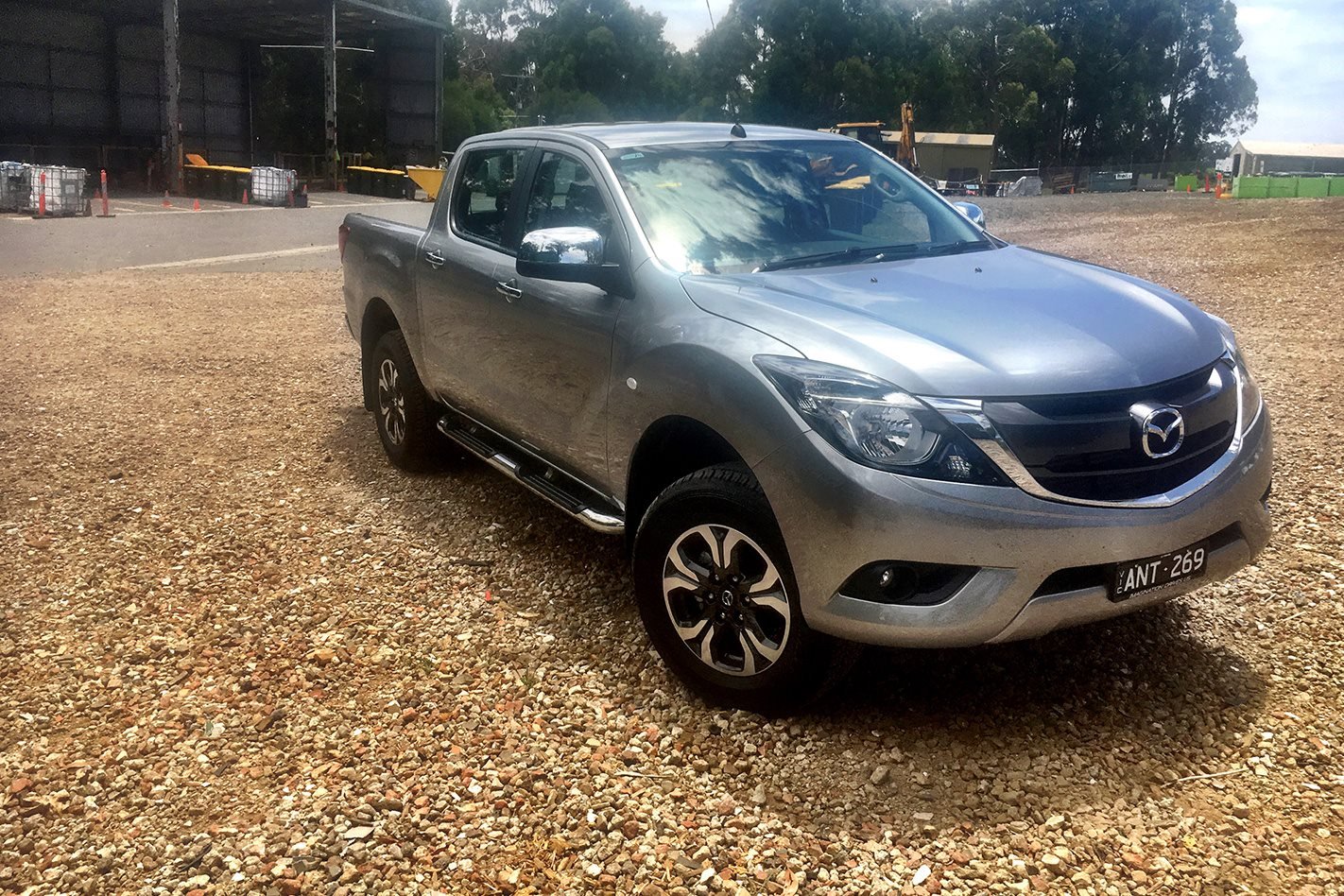
Dig back through the annual sales figures for traditional passenger cars and you notice an alarming statistic: we’re buying fewer and fewer of them proportionally as time goes by.
Instead, we’re walking past sedans, wagons and hatchbacks to buy mainly high-riding SUVs that don’t drive as well, or save as much fuel, as the once-popular vehicles that we now seem to be more likely than not to turn up our noses at.
But there’s another corner of the market that’s also showing strong growth, accounting for one in every five sales of a passenger car or an SUV: the trade ute.
Like SUVs are to passenger cars, the growing fleet of 4×4 trade utes filling showrooms of more brands than ever before – and more are yet to come – don’t drive as well, or save as much fuel as the vehicles we favoured only a few decades ago.
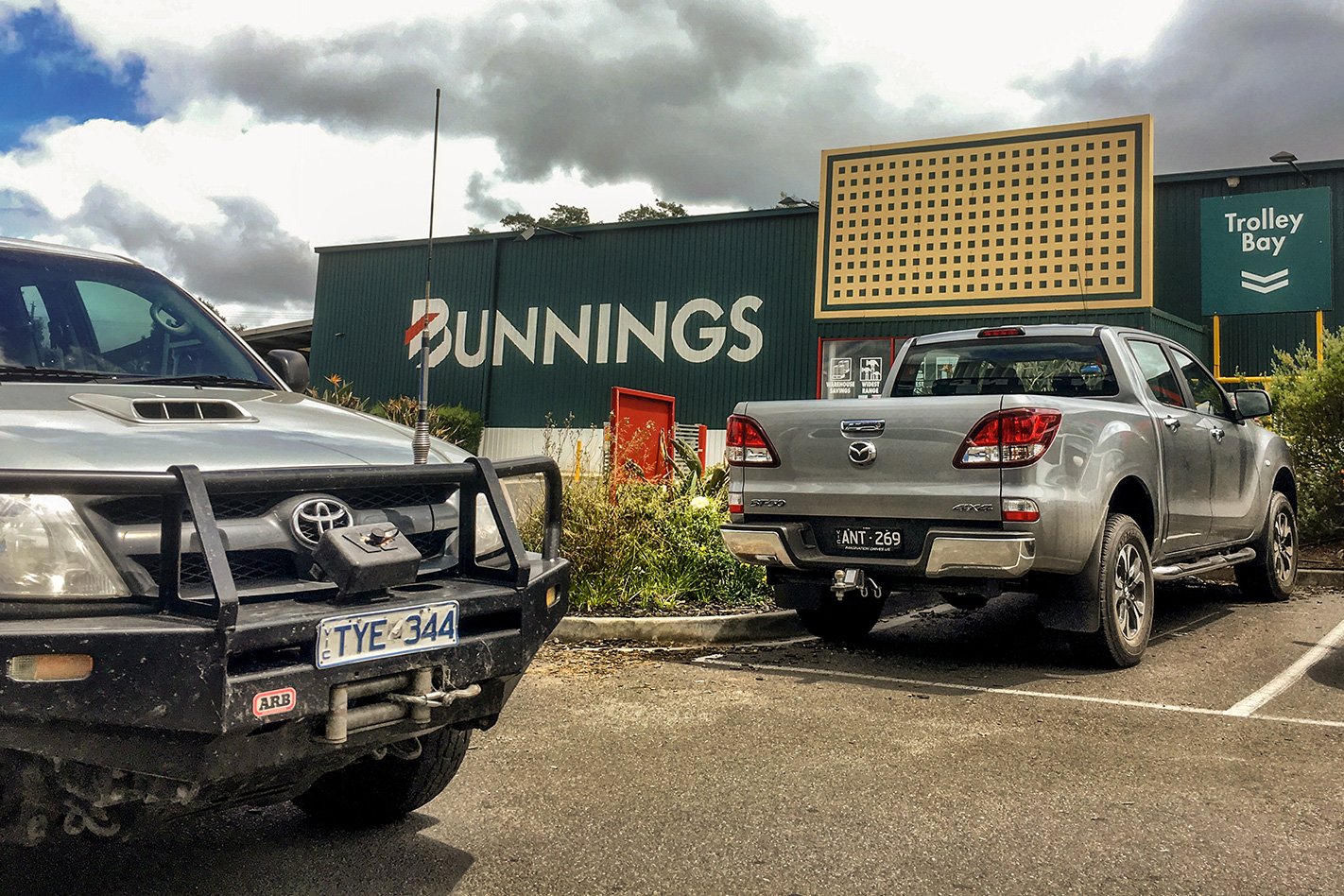
But mum and dad buyers everywhere are still keen to kick trade ute tyres, and car makers are more than keen to take their money, because these types of vehicles can reap some serious profit.
WhichCar jumped behind the wheel of one of these utes – a dual-cab (five-seat) Mazda BT-50 XTR worth almost $46,000 – recently to see how well it would adapt to family life.
Our first look at the mid-specification Mazda BT-50 XTR dual-cab ute that will be our main source of family transport for the next 14 days reveals it is clad in metallic aluminium paint, a surprising no-cost option other car makers often charge extra for adding a bit of sparkle, so to get it for free is a bonus.
Soft-nosed at the front, boxy at the rear and long and tall compared with the cars parked around it, the BT-50 stands out from the crowd. A quick walk-around shows there’s no front parking sensors, which given its size will be a worry for any future forays into shopping centre car parks. But tucked under the logo on the tailgate is a reversing camera, which will come in handy a bit later on, as we will discover.
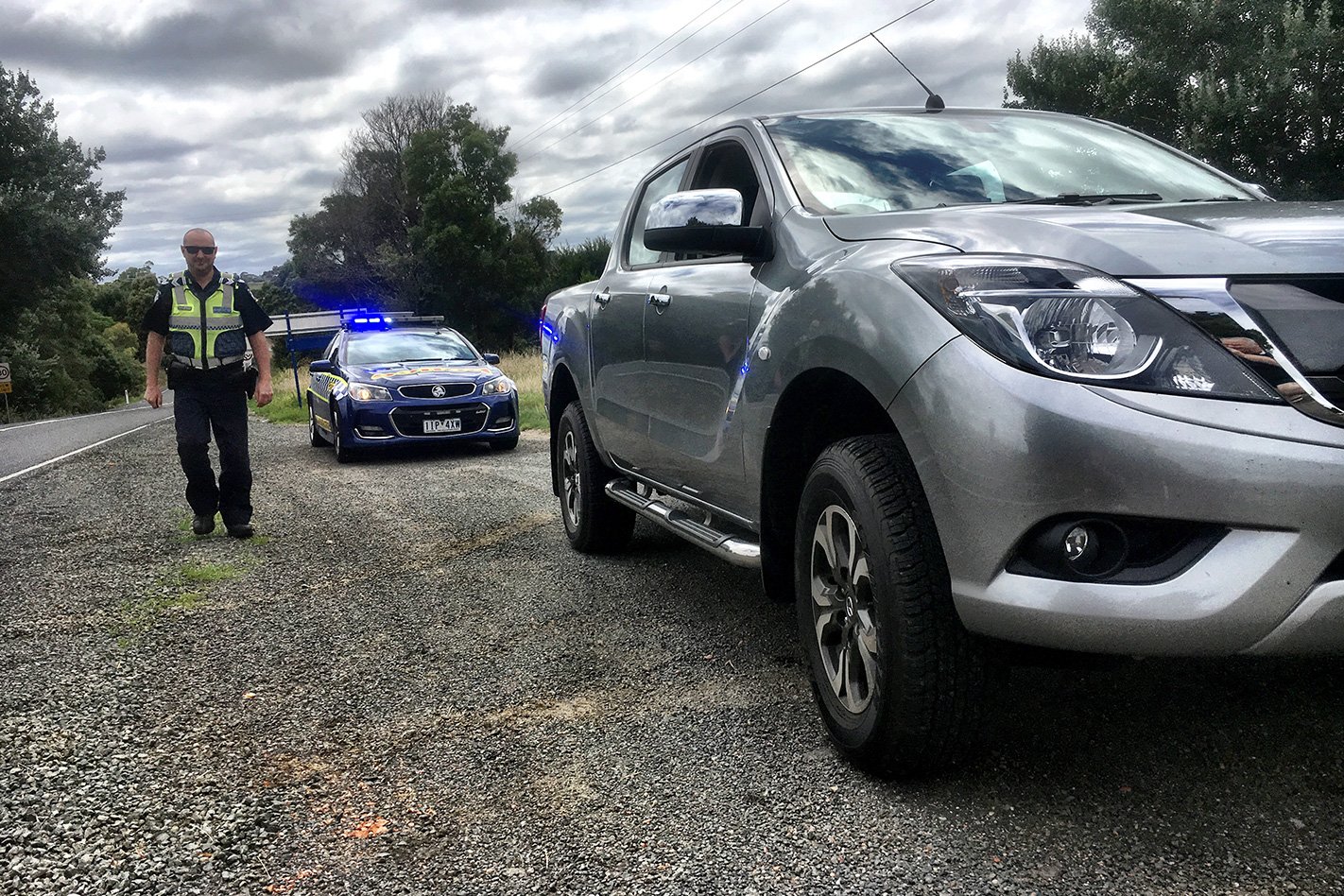
Beneath its skin, the Mazda shares a lot of DNA with the Ford Ranger. Both are built off the same ladder-frame chassis – a style of car making where the body is bolted onto heavy-duty steel rails rather than formed as a monocoque – and share engines and gearboxes. However, the looks are at opposite ends of the spectrum: where the Ranger asserts itself as all butch and tough, by comparison the softer-formed BT-50 is more business-like.
The Mazda has a smart entry key, just like a normal car, so all the doors unlock at the press of a button. A flip-out key will start the engine.
Open the driver’s door, and the first thing you notice is that it’s a long way up into the driver’s seat. Climbing into it is an effort for me – and I’m not short – although helping me are rock slider-style side steps and a handle protruding from the A-pillar that runs along the side of the windscreen.
Once settled, the cloth-covered seat is big and supportive, with decent manual adjustment via a ratchet for backrest rake, and a lumbar and height adjustment for the driver’s side only. However, the steering wheel will only adjust up and down, missing the in and out sliding function that would help me to find the most comfortable driving position. My arms are left a little too straight for my liking.
Even though it is based on a workhorse, the BT-50 XTR comes well equipped. The mirrors adjust electrically, there’s a sat-nav system integrated into the six-speaker audio headunit that includes digital radio, the rear-vision mirror will automatically dim at night, and both the steering wheel and the gear-shift lever for the six-speed automatic transmission are wrapped in leather. In other words, you’re not missing out on much that an ordinary passenger car will have.
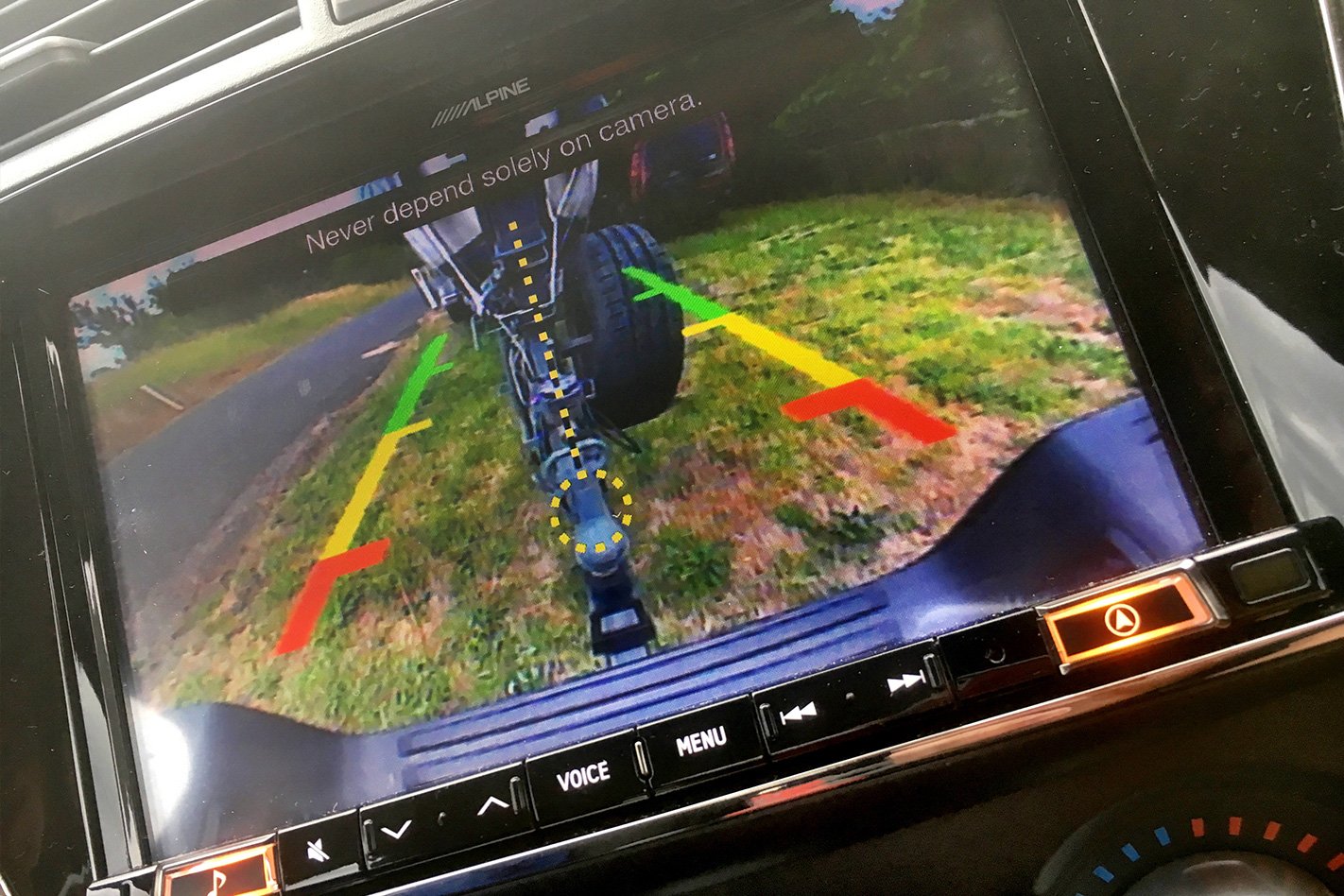
It’s from the point where you start the engine that the differences to a passenger car become even more apparent.
Straight away, it doesn’t sound or feel like a passenger car, even at idle. Under the bonnet is a 3.2-litre five-cylinder turbo-diesel engine, producing 147kW and 470Nm. (The significantly smaller 2.0-litre turbo-diesel engine in a Ford Mondeo produces 132kW and 400Nm, not too far behind it.) When cold the engine clatters noisily as its high-pressure injectors slowly warm. Once warmed up, though, the noise is less intense.
On the road, it feels like a truck engine, growling with every squeeze of the accelerator pedal. The engine is a bit laggy down low, but once the turbocharger spools up and the big serve of torque, delivered very low in the rev range, arrives like a tsunami there’s a rush of power that will have you spinning the rear wheels in the wet if you’re a bit heavy with your right foot.
Ride is also compromised. Trade ute makers are tripping over themselves to provide best-in-class towing capacity, and that means big, beefy suspension systems. The BT-50 uses a car-like double-A-arm front suspension, but down the back it uses truck-like leafsprings that are better at carrying weight – and towing up to 3.5 tonnes, the equivalent of carting around a fully grown female elephant on a trailer. (We put 1.6 tonnes on the back of it, and the BT-50 hardly knew it was there). Helping the towing ability is a reversing camera that includes a towball setting that helps you place the towball precisely under the hitch. It’s an argument-saver.
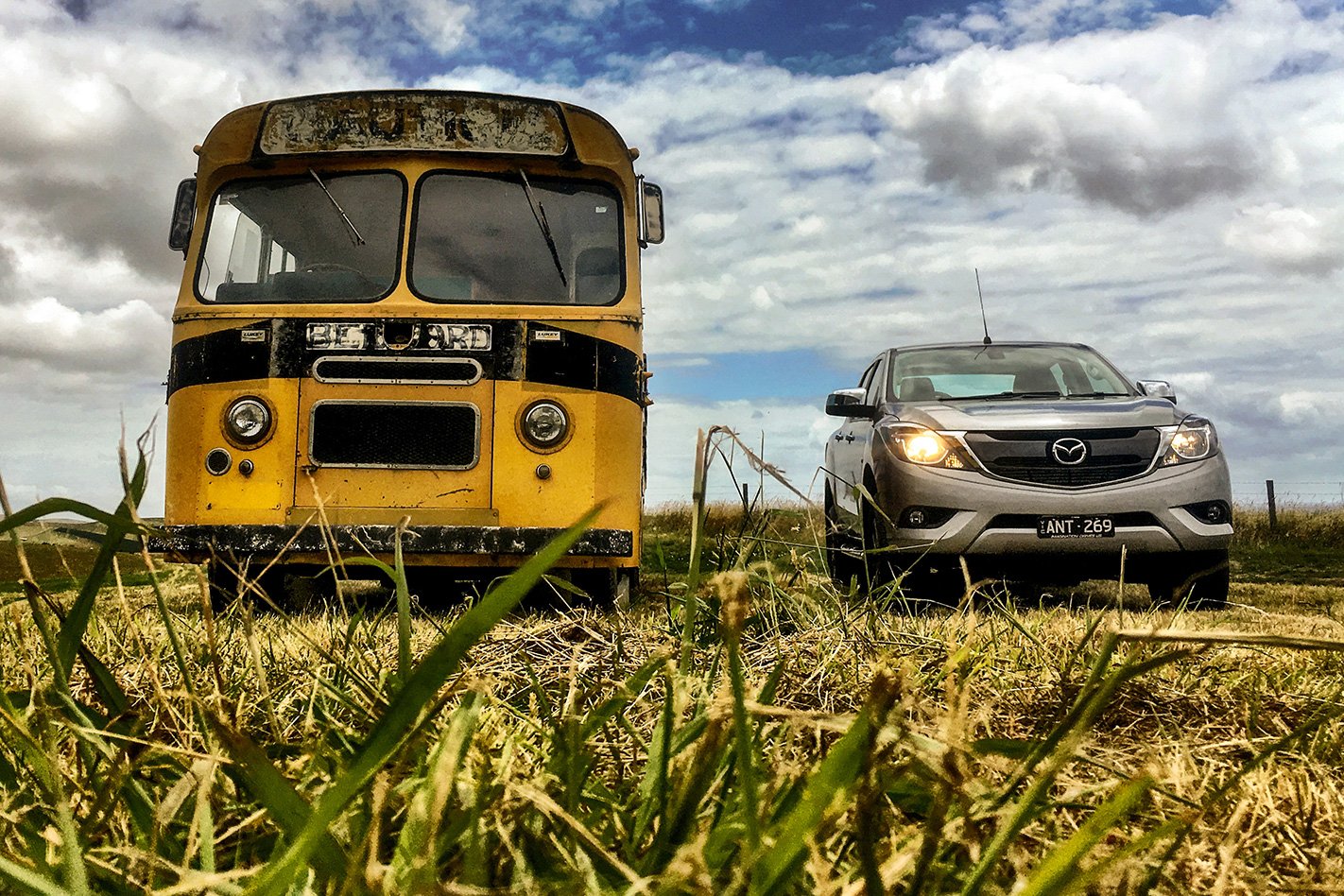
All that towing ability means the suspension has to be set up so tautly that the ride, even at low speeds, is quite bouncy. What doesn’t help is that because it has four-wheel drive, the 2.1-tonne BT-50’s rear axle is quite heavy, making it hard for the already overly sensitive suspension to settle quickly after hitting a bump.
The steering is okay, although the extreme length of the BT-50 means that some tighter car parks will be beyond your ability behind the wheel. Compounding this is a larger-than-normal turning circle compared with some passenger cars, meaning even if you’re going to squeeze into a tight space, you’ll need to shuffle back and forth to take a few bites at it.
The BT-50 isn’t all that economical, either. We averaged almost 10.0 litres per 100 kilometres in a mix of country and city driving, against a claimed average of 8.9L/100km. In a diesel-engined passenger car, you’d expect around 6.0L/100km.
There are strengths, though. The BT-50’s air-conditioning system is almost industrial in its ability, cooling or heating the large cabin in a few minutes even in extremes where some passenger cars would struggle. The interior space it affords is great, with genuine room inside for five adults. Inside is versatile, as you can flip up the rear seat space to create more room for large objects you don’t want to leave in the tub.
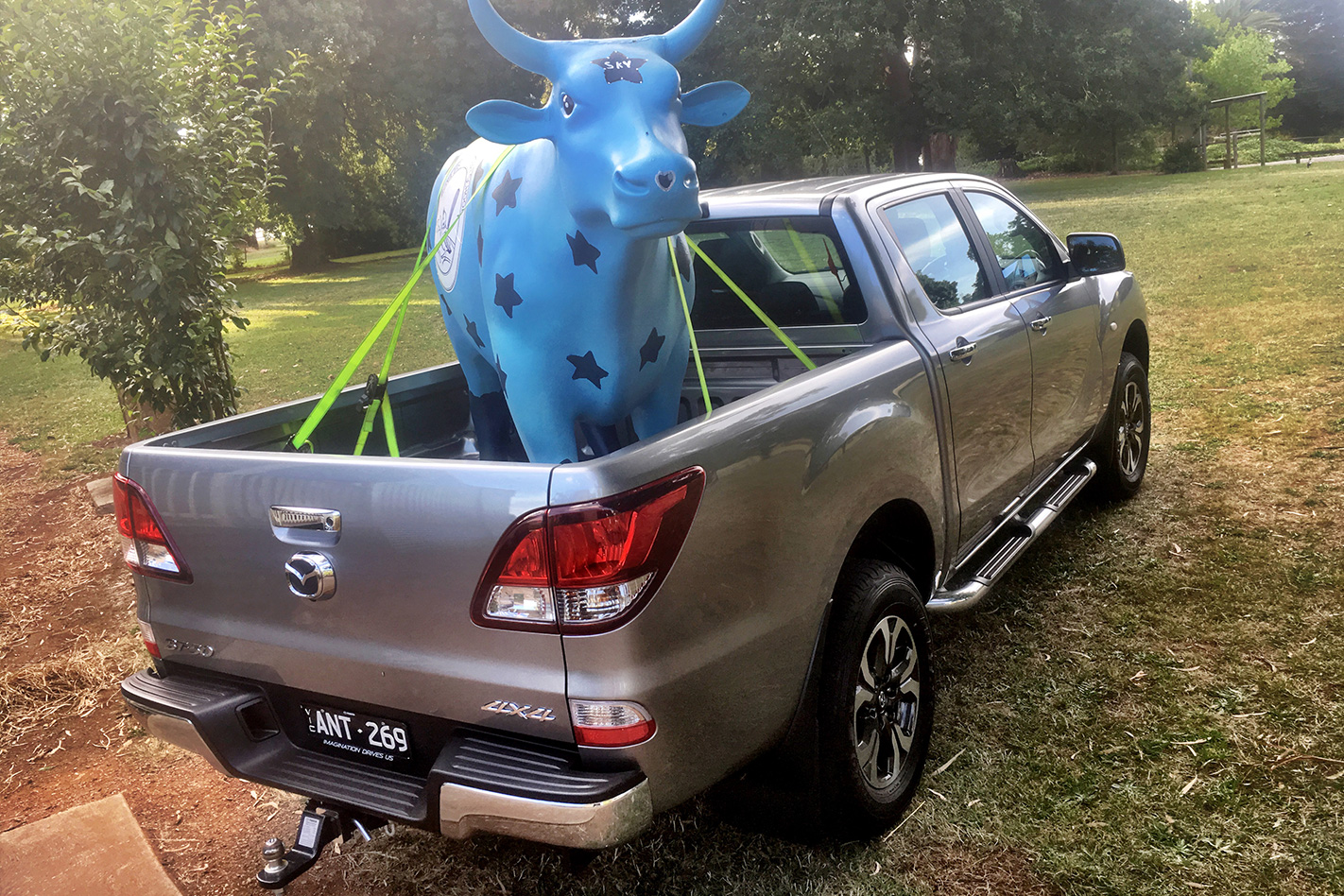
And there’s that tub. Handy for tip runs, camping trips and off-road motorcycles, it’s the party end of the ute. We even managed to fit a life-size fibreglass cow in it.
It’s that practicality that would win me over. The ability to chuck things in the back and transport it around carries romantic images of clearing the house of unwanted clutter, buying dog chow in bulk from the local grain store, tidying up the yard to House and Garden specification, collecting loads of winter firewood, or even head bush for a long weekend, family in tow.
Once the novelty of what the trade ute offers wears off, though, the reality may be a bit different.



